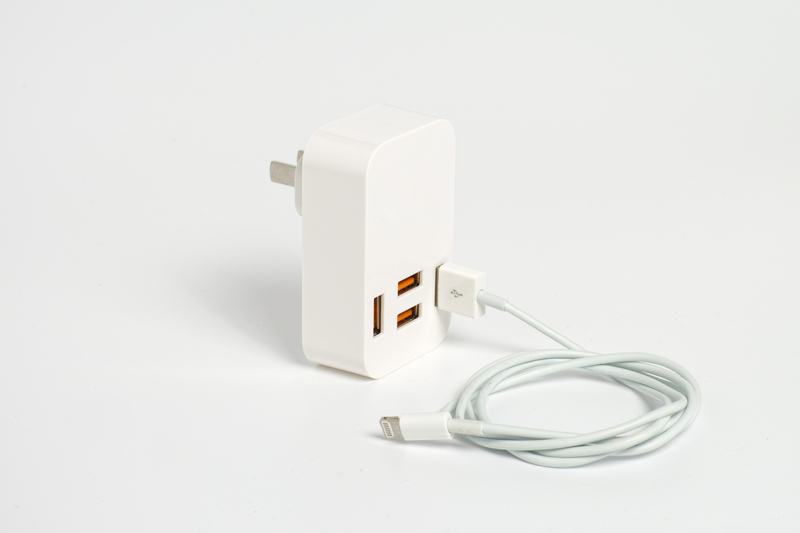How to Protect Your Freezer When Not in Regular Use
Freezers are essential appliances for preserving food, but what happens when you don't need to use yours regularly? Whether you're heading away for an extended vacation, own a seasonal property, or keep a spare freezer for emergencies, protecting your freezer when not in regular use is crucial to extend its life and avoid expensive repairs. In this comprehensive guide, we'll share practical steps and expert tips on freezer care during periods of inactivity, ensuring your investment stays in top condition.
Why Proper Freezer Storage Matters
Many homeowners overlook the importance of protecting a freezer while unused. When not cared for correctly, a dormant freezer can develop mold, difficult odors, or even suffer from internal component damage. Taking the right precautions drastically minimizes the risk of:
- Mold growth and mildew inside the cavity
- Unpleasant odors that linger long after the freezer is used again
- Rust and corrosion on internal parts and shelves
- Pest infestations attracted by leftover food particles
- Mechanical failures from improper shutdown
Freezer maintenance when not in use is about more than just turning it off. Careful preparation is the key to a long-lasting and reliable appliance.

Step-by-Step Guide: How to Prepare Your Freezer for Inactivity
1. Empty the Freezer Completely
The first and most important step is to remove all food items from the freezer. Even well-packaged foods can spoil and leak during extended shutdowns, attracting pests and creating persistent odors.
- Safely store or dispose of perishable items
- Check corners and behind drawers for forgotten foods
- Wipe up any spills or crumbs
2. Defrost the Freezer
If your freezer is not frost-free, you'll need to fully defrost it. Even a small amount of residual ice can melt, leading to water damage and odor buildup.
- Unplug the freezer
- Let the ice melt naturally; speed up with bowls of warm water if desired
- Collect meltwater with towels or a shallow tray
- Wipe the interior completely dry
Tip: Never use sharp objects to chip away at ice as this can damage walls and compromise the insulation.
3. Deep Clean the Interior
After defrosting, clean the inside of your freezer thoroughly to prevent mold, mildew, and bad odors from developing during the unused period.
- Prepare a solution of baking soda and warm water (2 tablespoons baking soda to 1 quart of water)
- Wipe all surfaces, drawers, and gaskets
- Rinse with clean water
- Dry completely with a clean towel
This mixture naturally neutralizes odors and is gentle on surfaces. Avoid harsh chemicals, which can damage or leave residues inside the appliance.
4. Clean and Inspect Door Seals (Gaskets)
Freezer door gaskets are magnets for mold and grime. Use the baking soda solution and a soft brush to gently scrub the rubber gaskets, inspecting for any cracks or signs of wear.
- Ensure gaskets are dry to prevent rot
- If cracked or hardened, replace them to maintain a proper seal in the future
5. Leave the Door Ajar
Never close a freezer completely when storing it without power. A sealed, damp environment is ideal for mold and bacteria growth.
- Prop the door open at least an inch using a rolled towel, spacer, or the built-in door stopper if available
- This ensures airflow and prevents musty odors
- If your freezer is equipped with an airing function, activate it
Pro tip: Place an open box of baking soda or a few charcoal briquettes inside to absorb odors even further.
6. Store in a Suitable Location
If possible, move your unused freezer to a cool, dry, and well-ventilated location. Garages, basements, or utility rooms are ideal if they are free from damp or extreme temperatures.
- Avoid direct sunlight exposure
- Keep away from moisture sources to prevent rust
- Ensure the area is pest-free
- If stacking items on top, avoid blocking vents
7. Protect the Exterior
Wipe down and clean the outside of your freezer. Dust and dirt can cause corrosion--especially on the back panel or underneath near the coils and compressor.
- Clean coils gently with a soft brush or vacuum
- Inspect for signs of rust or corrosion and treat immediately
- Consider using a breathable appliance cover for longer-term storage, but never fully wrap in plastic (to avoid trapping in moisture)
8. Periodically Check the Freezer
Set a reminder to inspect your dormant freezer every few weeks, especially if it's stored in a location prone to temperature changes or humidity.
- Check for moisture or new odors
- Ensure the door is still slightly open
- Look for signs of pests
- Wipe any dust or cobwebs from exterior vents
Regular monitoring can prevent problems from escalating in your unused appliance.
Special Considerations for Different Freezer Types
Chest Freezers
Chest freezers are popular for their spacious design, but their low position and tight seal make them more prone to mold and odor build-up during downtime.
- Pay special attention to draining meltwater and drying all crevices
- Use extra spacers to prop the heavy lid open
- Ensure that the storage area allows air circulation around the unit
Upright Freezers
Upright freezers are easier to clean thanks to their vertical shelves, but their door seals and hinges may need lubrication if stored for many months.
- After cleaning, consider applying a light layer of petroleum jelly to gaskets
- Avoid resting heavy objects on the door to prevent misalignment
Compact & Small Freezers
Portable and mini-freezers can often be moved more easily, but be cautious about long-term storage in unheated spaces.
- Keep cords neatly wrapped and away from rodent access
- Store upright, not on their sides or backs
What To Do If You Want to Keep a Freezer Plugged In But Not Using It
Some homeowners prefer to leave their unused freezer running to avoid mold or gasket issues. If you choose this method:
- Set the freezer to the warmest appropriate temperature to save energy (typically follow the manufacturer's highest recommended setting)
- Still keep it empty and clean to prevent odors
- Check periodically for stray ice formation and keep the door tightly shut when not in use
*This approach uses more electricity in the long-term, but can be beneficial for freezers in humid or pest-prone environments.
Common Mistakes to Avoid When Storing a Freezer
- Forgetting to prop the door open! This is the biggest source of mold and mildew.
- Leaving moisture inside. Always ensure the freezer is bone dry before storing.
- Ignoring the power cord. Always unplug, clean, and neatly secure the power cord to prevent damage or rodent chewing.
- Using plastic wrap to cover. Plastic covers can trap moisture -- opt for a breathable cloth cover if necessary.
- Neglecting external areas. Don't forget to clean the back, under the freezer, and any removable ventilated panels.
How to Reactivate Your Freezer After a Period of Inactivity
- Give the interior a quick check and wipe-down
- Inspect the cord and plug for any damage
- Restore to proper position and plug in
- Allow several hours to reach optimal temperature before restocking with food
- Restock gradually, starting with non-perishables to confirm steady operation
Additional Tips to Prolong Freezer Lifespan During Downtime
- Maintain a maintenance log: Note cleaning dates and inspections so you don't miss a checkup
- Keep a box of baking soda inside -- replace every 2-3 months for maximum odor protection
- Monitor humidity and temperature in your storage space, as extreme fluctuations can affect gaskets and components
- Label and wrap the power cord to avoid tripping or bending damage
- Ask a neighbor or friend to check the unit if you're away for months

Conclusion: Keep Your Freezer Safe and Ready for Use
Properly storing your freezer when not in regular use is a simple but effective way to ensure it stays clean, efficient, and ready to work whenever you need it. From emptying, defrosting, and deep cleaning to proper door positioning and periodic checks, these steps can help you avoid costly repairs and extend the appliance's usable life for years. Whether it's a chest, upright, or compact freezer, these best practices are essential for freezer maintenance during inactivity. Don't let neglect shorten your freezer's lifespan--take action now, and enjoy peace of mind knowing your food preservation investment is protected.
Frequently Asked Questions (FAQ) About Protecting Unused Freezers
How long can a freezer go unused?
A freezer can be stored unplugged and unused for many months or even a year, as long as it is completely clean, dry, and the door is left ajar.
Should I unplug my freezer if not using it?
Yes, unplugging your freezer is best for safety and energy savings, unless it is in a humid or pest-prone environment where running it is a better option. Always ensure you follow all the shutdown and cleaning steps above.
Will the freezer smell if closed during storage?
Almost always. A closed, unpowered freezer traps moisture and will almost certainly develop musty, unpleasant odors and possibly mold.
Is it okay to store my freezer in the garage or basement?
Storing a freezer in a cool, dry, and ventilated location is ideal. Avoid damp basements or locations that get extremely hot or cold, as this can damage the seals and components.
Can animals get into an unused freezer?
While rare, pests and rodents have been known to infiltrate old appliances, especially if any food is left behind or the area is not secure. Take precautions to keep storage spaces clean and sealed.
For long-term appliance health and hygiene, protecting your freezer during periods of non-use will keep it functioning smoothly and odor-free, ensuring you're always ready for the next time you need it!



